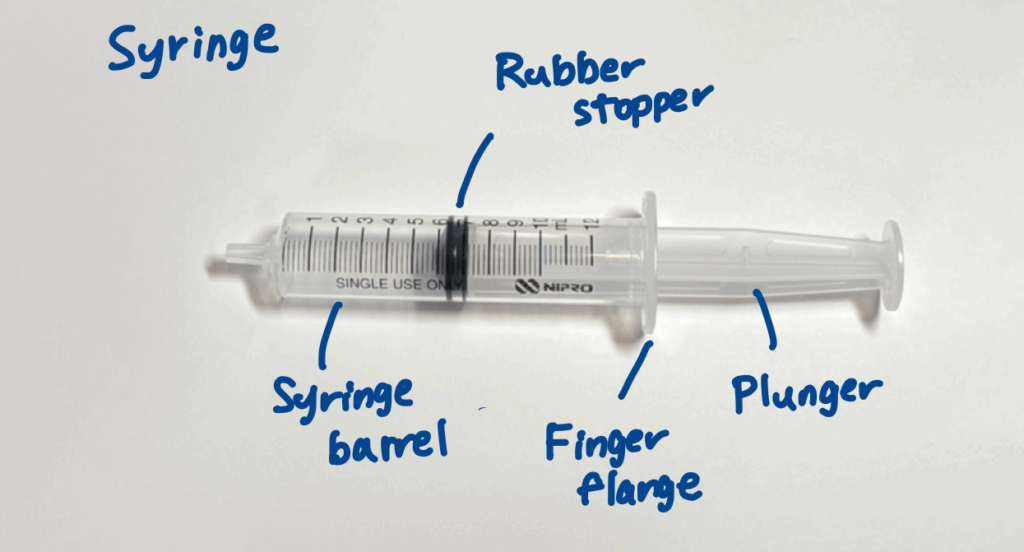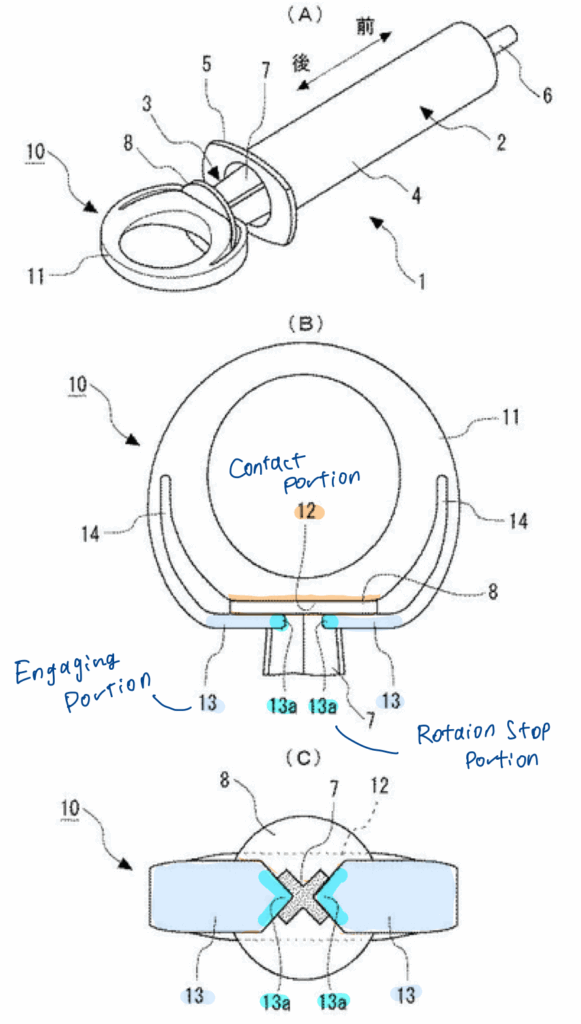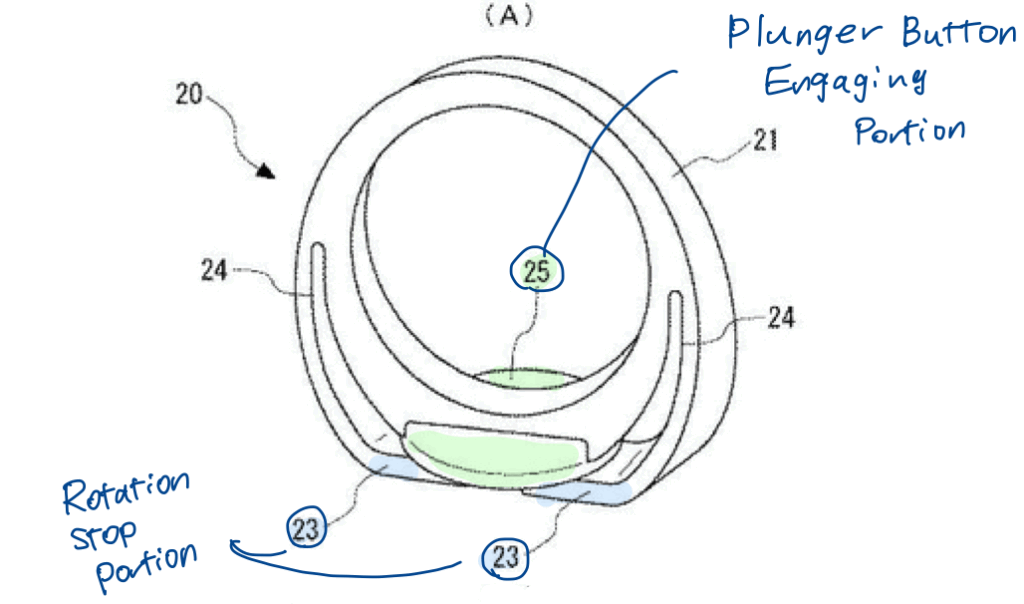In previous articles, we discussed ways to reduce injection pain, such as needle design and the role of pressure in medical procedures.
→ “Needle Design Innovations for Less Painful Injections” and “Pressure in Nursing Care: How It Affects Injections, IV Drips, and Pressure Ulcers”
However, injection comfort is not determined by devices alone. Proper technique is essential to make the most of these tools.
In practice, difficulty in pushing the syringe plunger can become a real burden for clinicians, and this often increases patient discomfort and pain.
This article introduces the Plunger Assist Ring, highlighting its design concept as described in the patent literature.
Based on patent information, we’ll explore its features, the structure of a syringe, and the physical factors that make plungers harder to push.
Disclaimer: This article includes affiliate links and reflects the author’s personal views. For actual use, please refer to official product documentation and approvals.
Syringe Structure
In Japanese medical settings, the word “syringe” is also commonly used as “shiringi” (シリンジ).
It refers to a device used to inject medication into the body or aspirate fluids such as blood.

- Barrel: The transparent tube that holds the medication.
- Plunger: A rod-shaped component that pushes the fluid out. It has a cross-shaped shaft and a rubber tip for sealing.
- Gasket: The rubber part at the tip of the plunger that seals against the barrel’s inner wall to prevent leakage.
- Finger Flange: Wing-like extensions at the base of the barrel that provide stability during operation.
Why Is the Plunger Hard to Push?
The force required to push the plunger can be expressed as:
Force (N) = Pressure (Pa) × Cross-sectional area of the syringe barrel (m²)
Larger cross-sectional areas require greater force to create the pressure needed to push fluid through the needle.
Other factors, such as needle size, fluid viscosity, and friction, also play a role.
1. Syringe Diameter (Cross-sectional Area)
The larger the syringe diameter, the greater the force required for the same pressure.
Force ↑ = Pressure × Cross-sectional Area ↑
2. Needle Gauge (Thickness)
Thinner needles increase resistance.
When the internal lumen is narrower, fluid contacts the wall more, which raises friction.
This requires higher pressure and, in turn, more force to push the plunger.
Force ↑ = Pressure ↑ × Cross-sectional Area
3. Fluid Viscosity
Highly viscous fluids flow less easily. Viscosity restricts molecular movement, and as fluid flows through a tube, differences in speed between the center and the wall create shear stress, adding resistance. The higher the viscosity, the more force is needed.
Force ↑ = Pressure ↑ × Cross-sectional Area
4. Friction
Friction between the plunger and the barrel also matters. Frictional force is expressed as:
Friction = μ × N
μ = friction coefficient
N = the contact force between the gasket and the inner wall
Repeated use can degrade coatings, increasing friction and making the plunger harder to push. In this case, the total force can be written as:
Force ↑ = Pressure × Cross-sectional Area + Friction (μ × N)
The Plunger Assist Ring
Developed by Mita Rika Medical Co., Ltd., the Plunger Assist Ring is designed to make syringe operation easier, especially when one-handed control is needed.

(This link leads to a Japan-based affiliate website.)
It can be attached to syringes from any manufacturer.
According to the product documentation, the design concept has been considered for procedures that require one-handed operation or involve viscous solutions, such as nerve blocks or hyaluronic acid injections.
Patent Information:
Publication No.: JP 2017-23412
Publication Date: Feb 2, 2017
Title: Plunger Assist Device
Background and Problem
Most injection techniques require checking for blood return, which means pulling back the plunger slightly to confirm whether blood enters the syringe.
This ensures correct needle placement.
Still, one hand is often occupied holding the needle or handling other equipment, so being able to operate the syringe with one hand is ideal.
When the plunger is stiff or the user is inexperienced, switching grip is often necessary, which increases the risk of needle-tip movement and slows down the procedure.
While syringes designed for one-handed use exist, they tend to be complicated and expensive.
The Solution: Key Features
Central Ring
The ring allows the user to insert their thumb for a stable grip, making both pushing and pulling easier.

This design is intended to improve control, as described in the patent, especially for one-handed operation or when handling viscous solutions.
Anti-Dislodgement Mechanism
The device clamps the plunger button from the front and back (12) and secures the shaft with engagement portions(13, Fig. 23).
Finally, the button engagement portion (25) locks everything in place to prevent it from coming loose.


Source: Partly modified and annotated based on JP Patent Publication P2017-23412A.
Anti-Rotation Structure
The plunger shaft has a cross-shaped groove that fits into the rotation-stop portion (13a).

Source: Partly modified and annotated based on JP Patent Publication P2017-23412A.

This prevents the assist ring from rotating independently, keeping the force direction stable and reducing needle-tip wobble.
Closing Thoughts
As home healthcare becomes more common, the demand for tools that are safe and easy to handle is expected to grow.
While the Plunger Assist Ring is designed for clinical use by healthcare professionals, its one-handed operation concept may have broader relevance.
Please refer to the official product documentation and regulatory approvals for actual indications of use.
From my nursing experience, stiff plungers can strain the hands, and structural assist tools may help ease this.
※This article reflects my personal views and is for informational purposes only. For actual use, always follow the official instructions and approved indications.
References
- Japan Patent Office: Kokai Tokkyo Koho (Published Patent Application), Publication No.: Tokkai 2017-23412, Publication Date: Feb 2, 2017, Invention Title: Plunger Hojo-gu (Plunger Assist Device)
- Kubota Naminosuke, Toko-ton Yasashii Ryutai Rikigaku no Hon (An Easy Guide to Fluid Dynamics), Nikkan Kogyo Shimbunsha, 2007
- Ogawa Koichi, Illustration de Manabu Kango Ningen Kogaku (Human Factors in Nursing), Tokyo Denki Daigaku Shuppankyoku, 2016
- Mita Rika Medical Co., Ltd., https://racoon-medical.co.jp/product/Plunger_Assist_Ring


